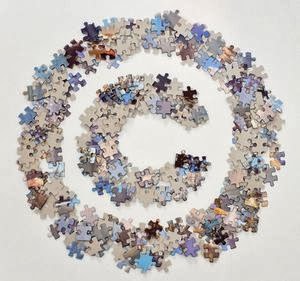
It was great meeting with Paula because she had so many questions. I’ve attempted to give a pithy response.. but if something needs more clarity, let me know in the comments below.
-
What can we do with powerpoint in teaching and learning?
-
For presentation, work with student texts in a way that students work either on the data projector or individually. You can include language and literacy learning activities in the presentation.
-
You could work with the whole group of students using a powerpoint on the data projector, and then later put a copy in each student’s folder.. so they can work on it individually.
- What’s “the cloud” and how does it work?
-
Good question: the cloud is partly for data storage, and partly for running applications. The cloud is kept in data factories all around the world. [More info about the cloud in a previous post.]
-
Issues around the cloud: safety, security, access and permissions. Who has permission to view or edit your document? Can you trust the company? Do you still need to keep a backup on your own computer?
-
What’s the difference between google drive and dropbox?
-
An app like dropbox keeps your files synchronised between all your different devices and computers. For example you can share your microsoft word documents with colleagues, or you could make sure you have the same files on your laptop and desktop computer.
-
An app like google drive does the same, and also gives you applications for editing these files. Google drive has an “office suite”, with word processor, spreadsheet, presentation slides and drawing tools – all within the web browser.
-
What’s LinkedIn, and why am i getting so many emails from them?
-
It’s intended to be a kind of social media space for professional networking.
- When your friend or colleague signs up, Linkedin says, “Let us look through your contact list, we’ll tell all your contacts about us.” And your colleague says, “Sure, whatever.” Usually they don’t notice. Personally I don’t let them look through any of my email or contact lists.
- If you’re a member, you can change the amount of email your receive in the settings – or add a filter in your email program so that the messages go into a different folder or the rubbish.
-
Some students want to know how to build a web page.
-
There are so many different ways now to build a web page. It can be best these days to start small with a wiki (eg wikispaces) or blog (blogger, wordpress, edublogs).
-
Is there a way to have security on the iPad for just one app – so the kids don’t mess with it?
-
Good question – probably, but I don’t know. Anyone else know?
-
Android tablets let you create multiple login accounts, but not the iPad yet.
-
Where can I find simple texts for ESL learners?
-
How does the wiki work – can I make my own page?
- We may need a session on this one – any votes?
-
Similar copyright rules for the internet apply as with books. The Australian copyright agency has a fair bit of good information.
-
In the last few years, people have started to use other licences for example the creative commons licence – which allows people to use your work as long as they give you credit and link back to you. [creative commons information]
